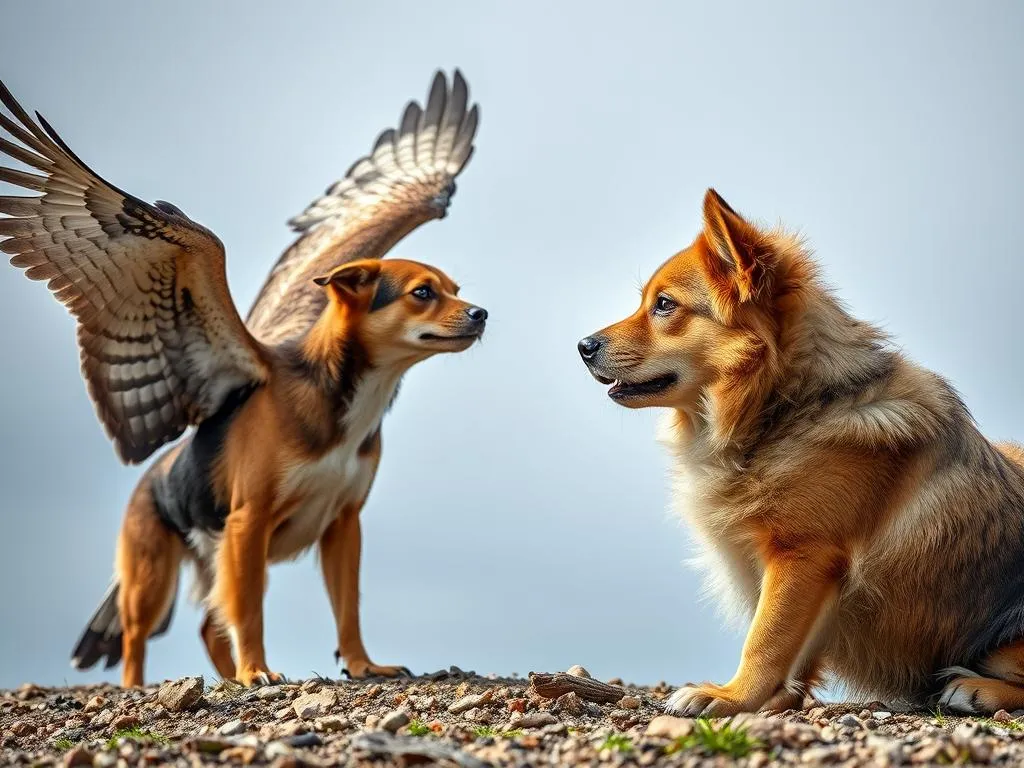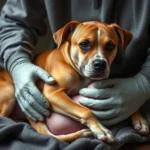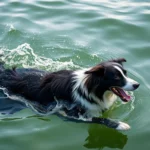
Introduction
Dog health care is crucial for ensuring our furry friends lead long, happy lives. As pet owners, we often think about their diet, exercise, and regular veterinary check-ups. However, there are specific risks that smaller breeds face, particularly from predators like hawks. Understanding how to protect small dogs from hawks is essential for their safety, especially given the alarming frequency of such predatory encounters.
Understanding the Threat
The Predatory Behavior of Hawks
Hawks are magnificent birds of prey, and certain species, such as the Red-tailed Hawk and Cooper’s Hawk, pose a significant threat to small dogs. These birds have keen eyesight and can spot their prey from great distances. Their hunting techniques are both impressive and alarming: they swoop down at high speeds, using their sharp talons to grab unsuspecting animals.
These predators are opportunistic hunters, which means they will take advantage of any chance to catch a meal. Small dogs, in particular, can fall prey to these birds due to their size and the lack of awareness that many dogs exhibit when outside.
Why Small Dogs are Vulnerable
Small dogs are particularly vulnerable to hawks for various reasons. Their diminutive size means they weigh significantly less than their larger canine counterparts, making them easier targets. Moreover, their natural curiosity and playful behavior can attract the attention of hawks.
Statistics indicate that small dogs are at a higher risk of hawk attacks, especially in open fields and areas where hawks are known to nest. The combination of their size, weight, and behavioral traits makes them more susceptible to predation.
Recognizing Signs of Danger
Behavioral Indicators in Dogs
Understanding your dog’s behavior can help you recognize when they feel threatened. Signs that may indicate a dog is aware of a potential danger include excessive barking, whining, or hiding. If your dog suddenly becomes agitated or tries to hide behind you, they may sense a threat in their environment.
Environmental Cues
Certain environmental factors can signal the presence of hawks. Areas with open fields, parks, or even backyards with tall trees may be more prone to hawk activity. Additionally, seasonal patterns play a role; hawk sightings tend to increase during spring and summer when they are nesting and hunting for food.
Preventative Measures
Supervision and Outdoor Time
One of the most effective ways to protect small dogs from hawks is to supervise them during outdoor activities. Always keep a close eye on your dog when they are outside, especially in open areas.
To enhance safety during outdoor playtime, consider using a leash or allowing your dog to play in a fenced area. This not only keeps them safe from predators but also prevents them from wandering into dangerous situations.
Safe Spaces for Small Dogs
Creating safe spaces in your yard can provide an additional layer of protection. Consider building a secure dog enclosure or outdoor kennel where your small dog can play without the risk of coming into contact with hawks. Ensure that these spaces are covered or have a roof to protect against aerial threats.
Training for Safety
Training your dog is a proactive step in ensuring their safety. Basic commands such as “come” and “stay” can be invaluable in keeping your dog close to you, especially in potentially dangerous situations. Teaching your dog to recognize and respond to threats can further enhance their safety outdoors.
Protective Gear and Accessories
Harnesses and Leashes
Using secure and durable harnesses is essential for small dogs, particularly when outdoors. A good harness provides better control and prevents escape. Additionally, a sturdy leash is vital in open areas where hawks may be present. Always ensure that your dog is leashed when walking in areas known for hawk activity.
Visual Deterrents
Visual deterrents can be an effective strategy to keep hawks away from your small dog. Consider outfitting your dog with reflective or brightly colored gear, making them more visible in nature. You can also introduce items like flags or shiny objects that may deter hawks from approaching.
Community Awareness and Action
Educating Others
Raising awareness within your community can significantly contribute to the safety of small dogs. Share information about hawk threats with your neighbors, especially those who have small breeds. Organizing community awareness campaigns can help educate pet owners about the risks and preventative measures.
Reporting Sightings
Encouraging neighbors to report hawk sightings to local wildlife authorities is crucial. This helps track hawk populations and their movements, allowing for better community planning regarding pet safety. Creating a safer environment for pets in shared spaces involves collaboration and proactive strategies.
First Aid and Emergency Responses
Immediate Steps if an Attack Occurs
If your dog is attacked by a hawk, remain calm and act swiftly. Try to scare the hawk away by making loud noises or waving your arms. Once the threat has passed, check your dog for injuries. Common injuries may include scratches or puncture wounds from the hawk’s talons.
When to Seek Veterinary Care
Some injuries may require professional medical attention. Signs that necessitate a visit to the veterinarian include excessive bleeding, difficulty breathing, or signs of shock. Additionally, even if your dog appears fine, consider taking them for a post-incident check-up to ensure they are healthy and free from potential infections.
Conclusion
Understanding how to protect small dogs from hawks is a vital part of responsible pet ownership. By recognizing the threats posed by these predators and implementing protective measures, you can help ensure your small dog’s safety. Whether through supervision, safe outdoor spaces, or community awareness, it’s essential to take proactive steps to safeguard our beloved pets.
As pet owners, we must remain vigilant and educated about the potential threats in our environment. By doing so, we can create a safer world for our furry companions and enjoy many more happy and healthy years together.









